Since legalization in some states, growing cannabis has come a long way. It’s exciting and confusing – at the same time. While we all try to sort out the wide variation in cannabis laws, now is the best time to begin growing as a hobby.
Growing cannabis can be fun because you have full control over which strains you grow and which mediums you use., You can also experiment with different growing techniques to counteract low yields due to the number of plants you can grow. If you think you’re too inexperienced, don’t worry! a Pot for Pot is an excellent way to get started. Our all-in-one kit is the best way to learn how to grow a cannabis plant.
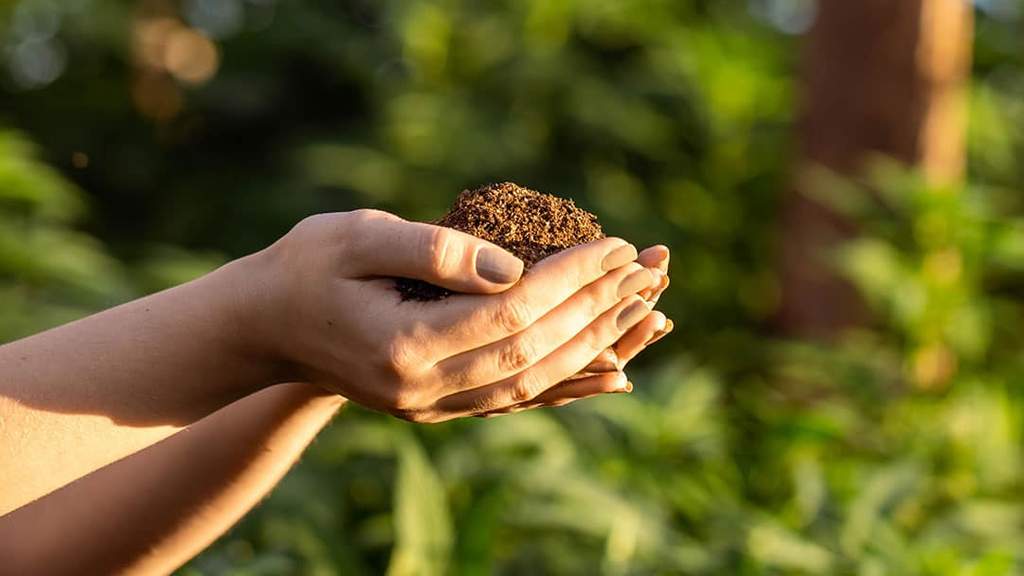
Getting Started Growing Cannabis Seeds
Can I grow cannabis? This is often the first question consumers ask when they are researching how to grow cannabis at home. State laws vary widely when it comes to growing cannabis! Once you’ve confirmed that it is legal for you to grow cannabis in your home state, you’re ready to begin your cannabis-growing journey.
The first step is germination, or the process by which a seed sprouts to form a seedling. Specific environmental conditions must be met to allow germination. Choose a method to quickly germinate cannabis seeds that also guarantee each one will grow strong and healthy.
The environment of your growing room significantly impacts the germination of your cannabis seeds. The ideal environment for cannabis seeds to sprout is at room temperature (22°C), with high humidity.
Here’s How to Germinate Cannabis Seeds
If you’re using an indoor setup, simply put up a few extra grow lights for your seedlings. If you’re growing your seedlings outdoors, find a place that has plenty of sunlight and high humidity.
Whether you are planning on indoor pot growing or outdoor cannabis cultivation, your seedlings will stretch if they don’t receive enough light. Achieving the appropriate light intensity is crucial to your success and can become second nature with practice.
How Long Does a Cannabis Plant Take to Grow?
Aspiring cannabis growers often wonder how long to grow a cannabis plant?’ or ‘How long does it take to grow cannabis indoors?’ It ranges from 8.5 weeks to over 7 months. This wide range is due to a variety of factors that affect the growing time. However, the average growing period is 3-4 months.
Are you seeking a more comprehensive answer for how long to grow cannabis? Several factors can impact the total time it takes for cannabis to fully mature, including cannabis strain, desired yield, and the growing method.
Different cannabis strains have different growing times. They also have differing harvest sizes. From our experience, those with longer growing times have higher yields, which is another variation between strains. It comes down to which strains you want and how long you’re willing to wait to harvest.
Desired yield and growing methods applied to cannabis work hand-in-hand. Main-lining weed adds between 10 days and 2 weeks to the total grow time because the plant needs to recover from topping. For most growers, this is negligible considering the increased yield of the plant. Some growing techniques like bubbleponics shave a few weeks off the total grow time of cannabis while also improving yield. Utilizing the bubbleponics growing method requires experience and special equipment.
Whether you cultivate your cannabis indoors or outdoors also determines how long it takes to grow. Growing cannabis outdoors takes longer than indoors, as it’s more dependent on environmental factors. You can’t influence outdoor conditions, but you can completely control indoor setups.
If time isn’t a concern, you can increase their harvest’s drying and curing time for better results. For example, many experienced cannabis growers practice longer curing methods on their harvest to encourage deeper flavors.
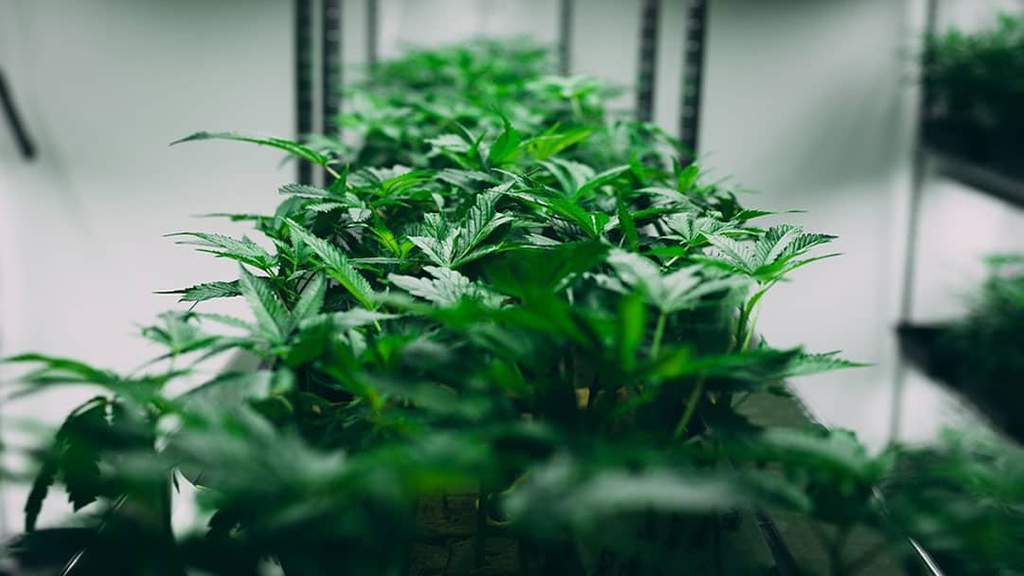
How to Grow Medicinal Cannabis
The medicinal properties of cannabis have helped countless U.S citizens with a variety of chronic pain and other conditions. Thankfully, growing medicinal cannabis isn’t too different from growing it for recreational use.
When choosing which strain to cultivate, consider the levels of cannabidiol (CBD) and tetrahydrocannabinol (THC). Experienced growers recommend selecting a strain with high THC levels for pain relief and one with high levels of CBD to help with anxiety and other mental health disorders.
As cannabis grows, you need to maintain an environment free from pests and diseases to keep it healthy. As a result, most medicinal cannabis is grown indoors to allow growers to create a sterile environment. This helps them avoid using pesticides excessively while preventing pests and diseases from infecting the harvest.
Some growing methods can increase the production of trichomes. Trichomes are the tiny resin glands that accumulate on and around the flowers of a cannabis plant as it matures. They contain the cannabinoids and terpenes that give cannabis its flavor and psychoactive effects.
Main-lining and topping are good examples of high-stress training, which increase the yield and help increase the production of trichomes and terpenes, producing a more potent harvest.
Experienced growers would recommend first-time growers use grow lights and UVB to stress their plants instead of cutting. It’s safer to stress plants with light than cutting them because you cannot undo cutting, but you can adjust lights.
Once the cannabis has fully matured, waiting until the right time to harvest maximizes the CBD and THC levels of the harvest. After the cannabis is harvested, it must be dried and cured. To maximize potency, use longer drying and curing methods.
How to Grow Cannabis Indoors
When asked how to grow high-quality cannabis, most experienced growers recommend an indoor setup. They cultivate their cannabis indoors because they have complete control over the environment, allowing them to produce high-quality yields year-round.
Growing Cannabis in Different Mediums
Cannabis grows differently in water versus soil. Bubbleponics, a hydroponic growing method, allows cannabis plants to grow faster. However, hydroponics setups, which allow cannabis to be grown in water, are significantly more expensive than growing cannabis in soil because of the costly equipment it requires. As a result, we recommend that aspiring growers master growing cannabis in soil mediums before they begin to explore ‘how to grow hydro cannabis indoors.’
Considerations For Growing Cannabis Indoors
Growers need a few things to facilitate an indoor cannabis growing operation. First and foremost, you need space in either an empty room in your house or a grow tent. You will also need grow lights (preferably LED lights), a ventilation system, and a fan for improved air circulation. There’s also some sort of irrigation system, nutrients, and soil.
How to Grow Cannabis in Soil
The most significant element for growth is the soil it’s grown in. Regular contains beneficial bacteria that help convert organic matter into nutrients. It also includes fungi that form a symbiotic relationship with cannabis plants to help them uptake phosphorus and absorb additional moisture and other nutrients. This fungi, called mycorrhiza, also helps prevent water stress in the cannabis plant and allows the root system to grow further.
If you want good soil for your cannabis, avoid getting anything with synthetic fertilizers mixed into it. It’s unsuitable, and it ruins the flavor profile of the harvest. Instead, choose a quality potting soil that provides enough nutrients to carry your plants through most of their lifecycle without needing liquid fertilizer.
Quality potting soil can be purchased in a local grow shop, or you can make it yourself by combining worm castings, bat guano, and other organic components. Then, the soil must sit for weeks before mixing it with perlite or vermiculite. These elements improve aeration and increase water and nutrient retention. This prevents the plants from becoming rootbound and nutrient deficient.
a Pot for Pot produces premium soil suitable for first-time and experienced growers alike. It’s aptly named Superb Soil, and it contains everything your cannabis plants need to grow, except water.
Can You Grow Cannabis in Any Kind of Soil?
Cannabis requires rich soil with plenty of organic matter and good drainage. However, more resilient strains can thrive in almost any kind of soil.
Even so, growing cannabis in rich soil helps increase THC and CBD levels while also enhancing its taste.
What is the Best Soil for Growing Cannabis?
Cannabis thrives in loamy soil, which holds moisture, is easy to work with, and has good drainage. It also contains a lot of nutrients that cannabis needs to flourish. Good loamy soil is dark and crumbly like a Pot for Pot’s Superb Soil.
Can You Reuse Soil When Growing Cannabis?
You can reuse soil to grow cannabis, but it will need to be revitalized to restore the nutrients and bacteria lost during the previous harvest. First, reused soil requires aeration, and you must remove the roots of the prior growth. Then, mix in fertilizers and nutrients - organic matter like bat guano and worm casting to replace the missing nutrients and the beneficial bacteria it needs to grow.
Reusing soil isn’t recommended for first-timers, and contrary to popular belief, it doesn’t save you much money compared to buying new soil. In addition, in some cases, reusing soil runs the risk of excess nutrient levels because it’s challenging to determine which nutrients the soil is missing.
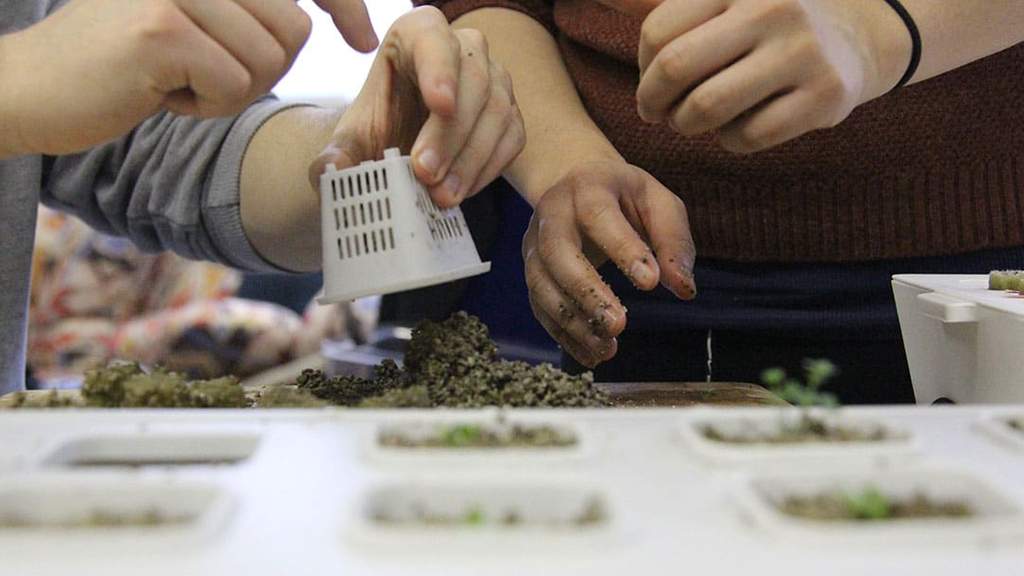
How to Grow Hydroponic Cannabis?
Experienced growers who know how to set up their hydroponics system and monitor it don’t recommend them for first-time growers. The effort in building the setup and watching the plants could be overwhelming for aspiring growers. However, there are advantages to using a hydroponics system - especially the top-fed deep water culture system, also known as ‘bubbleponics.’
Creating your own bubbleponics setup requires a hydroponic reservoir and tray, air-stone and pump, growing medium (perlite), net mesh planting pots, hydroponic-suitable nutrients, root boosters, pH and pH PPM meters, and a hygrometer. You’ll also need the standard equipment for an indoor setup if you plan to grow indoors.
After setting up your bubbleponics growing station and planting your cannabis, monitor the pH level of the water to ensure an ideal growing environment for your cannabis. A pH level between 5.5 and 5.8 is perfect. Maintaining an optimal temperature is also necessary to promote healthy cannabis. A hygrometer will help you maintain the environment. Keep the temperature around 20°C.
Once the cannabis is in its vegetative state, its roots gather in a large mass due to the rooting boosters and nutrients. Therefore, keep the roots clean to avoid mold, fungus, and root rot which can irreversibly damage your cannabis plants.
Bubbleponics allows growers to cultivate larger cannabis plants. It is also the primary method for growing big cannabis plants indoors.
Does Cannabis Grow Faster in Soil or Hydroponics?
Cannabis grows faster in a hydroponic setup than it does in soil. Hydroponics is a soilless growing medium that directly feeds nutrients into the crop’s roots while submerged in a nutrient-rich solution. As a result, nutrient-hungry cannabis won’t suffer from nutrient deficiency.
Hydroponics is even more effective when combined with rooting boosters. a Pot for Pot offers rooting boosters in each complete pot grow kit. Hydroponically-grown cannabis doesn’t become rootbound when treated with a rooting booster. This growing medium provides the highest yield compared to soil or any other soilless growing medium.
Grow Light Options
There are three types of lights available for growing cannabis: High-Intensity Discharge (HID), fluorescent, and Light Emitting Diode (LED) lights. Each of these lights suits a different style of growing.
HID lights are industry-standard for lighting large areas. The ballasts and reflectors in HID lights give them the range for large areas. They are known for their output, value, and efficiency. The two types of HID lights that we recommend to large growers are Metal Halide (MH) and High-Pressure Sodium (HPS). MH HIDs are perfect for cannabis in their vegetative phase. HPS HIDs are ideal for the flowering stage of cannabis plants.
If you’re trying to learn how to grow a single cannabis plant indoors, you should purchase fluorescent lights. T5 fluorescent bulbs produce a high output of light with minimal heat. Fluorescent lights are cheaper, but they’re not as efficient, leading to higher electricity bills for the grower.
LED lights are the best for indoor setups because they produce a fuller light spectrum. As a result, they can emit UV light that causes cannabis to grow more trichomes and terpenes in and around the plant’s buds. This increases both the flavor and the psychoactive effects of the harvest. So for the everyday home grower, they’re your best bet.
Humidity and Temperature
Controlling the humidity and temperature of your indoor cannabis setup can be tricky, but installing the appropriate equipment can help. In the smallest indoor growing setups, such as a grow tent, a ventilation system using fans helps improve air circulation and maintains the temperature.
Good ventilation helps, but it can’t control the humidity inside the grow room. If the space becomes too humid, investing in a dehumidifier may become necessary. Although dehumidifiers reduce humidity in a room, they also increase the temperature. That’s why experienced indoor growers sometimes use air conditioning units instead of a dehumidifier.
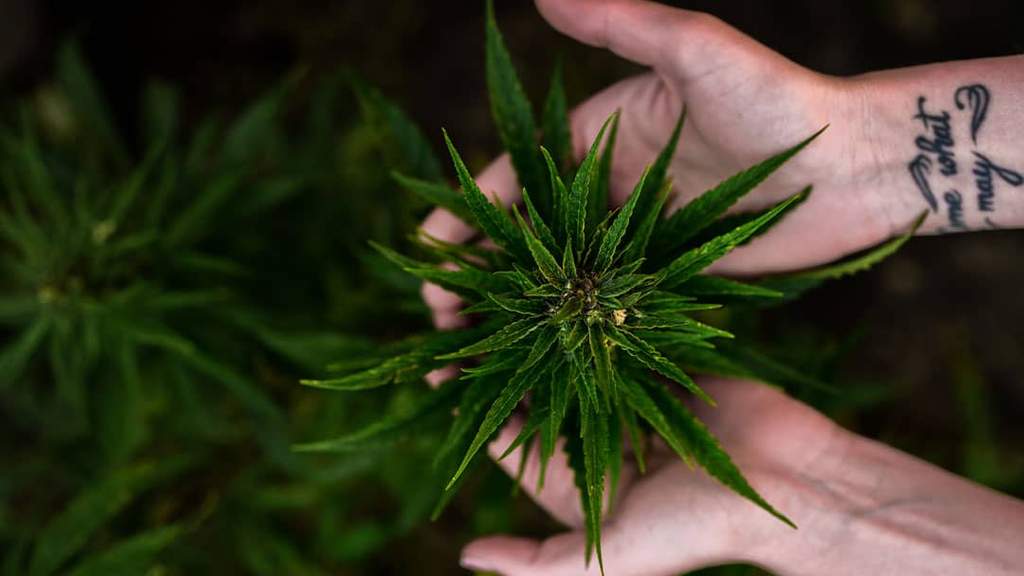
How to Grow Cannabis Outdoors
Indoor cannabis gardens aren’t cheap. Outdoor growing is inexpensive and easy to do. While growing cannabis outdoors can be challenging in its own right, it’s a lot less technical than most indoor setups.
Growing in a Pot vs. in the Ground
If the soil in the area you’re growing in doesn’t have loamy soil characteristics, grow your plants in a pot.
Cannabis got the name 'pot' for a reason. One of these reasons is because during prohibition planting your weed in pots made it easy to move if needed. This continues today where pots provide freedom and gives us a chance to provide the best environment for her depending on what is available. The plants that do the best in our garden get moved along with the sun!
Considerations When Growing Outdoors
Growing cannabis outdoors poses its challenges. The climate, season, and environment can affect cannabis that is grown outdoors more than cannabis is grown indoors because you can’t control the elements. However, introducing resilient cannabis strains that favor open space and harsher climates can help alleviate some of these concerns. There are even strains that are resistant to mold and fungal infection. You’ll still have to worry about pests, though.
Using a Cannabis Container
If the soil in a site isn’t fit for cannabis cultivation, growing in pots is the next best option. Growing your cannabis in a pot allows you to move your plants around and ensure that each plant gets enough nutrients to grow. Ceramic pots absorb moisture and retain a lower temperature during hotter days; however, they are heavy and difficult to move. As a result, many people save these pots for larger (greater than 4ft cannabis plants)
There are also inexpensive plastic pots, which are great for buying in bulk. The low overhead costs make it the preferred pot for growers with larger yields. Plastic pots also have better drainage than ceramic, and transplanting is easier. However, they lack durability and don’t protect against temperature fluctuations.
Fabric pots are the third choice that growers have. They provide better airflow to the roots than both plastic and ceramic. Fabric pots also have excellent drainage for more carefully maintained gardens. These benefits help promote healthy root systems for the cannabis plants. Despite being flexible, fabric pots are much stronger than plastic. As a result, you can reuse them for multiple yields.
Even though they’re more expensive than plastic and require more maintenance, fabric pots are a wise investment for any outdoor setup. A Pot for Pot’s Air Pruning Fabric Pot is a great addition to any outdoor cannabis setup.
Protecting Your Plants
When growing cannabis outdoors, growers risk exposing their plants to dangerous elements. Buying mold and mildew-resistant strains can help mitigate that risk. However, this doesn’t eliminate the threat from weather conditions, temperature, and pests.
You can address these concerns through the use of a DIY greenhouse. First, drape a large plastic sheet over a basic structure of PVC piping or another sturdy building material. This will protect the cannabis from the outdoor environment and prevent the plants from overexposing to sunlight. Overexposure to sunlight can cause cannabis to hermie when a plant grows male and female flowers.
You can prevent insects and animals from damaging your plants by installing a wire fence around the greenhouse and growing companion plants with cannabis plants. The wire fence will keep cats and dogs out of your plants, and companion plants like lavender, basil, and peppermint will produce chemicals to deter and kill insects like spider mites.
Companion plants also attract beneficial insects that help eliminate bug infestations. For example, ladybugs control aphid populations, which reproduce quickly and can ruin the quality of a harvest. Growers should adopt a prophylactic approach to prevent infestations before they happen. Once an infestation takes hold, there’s a noticeable drop in the quality of the smokeable harvest.
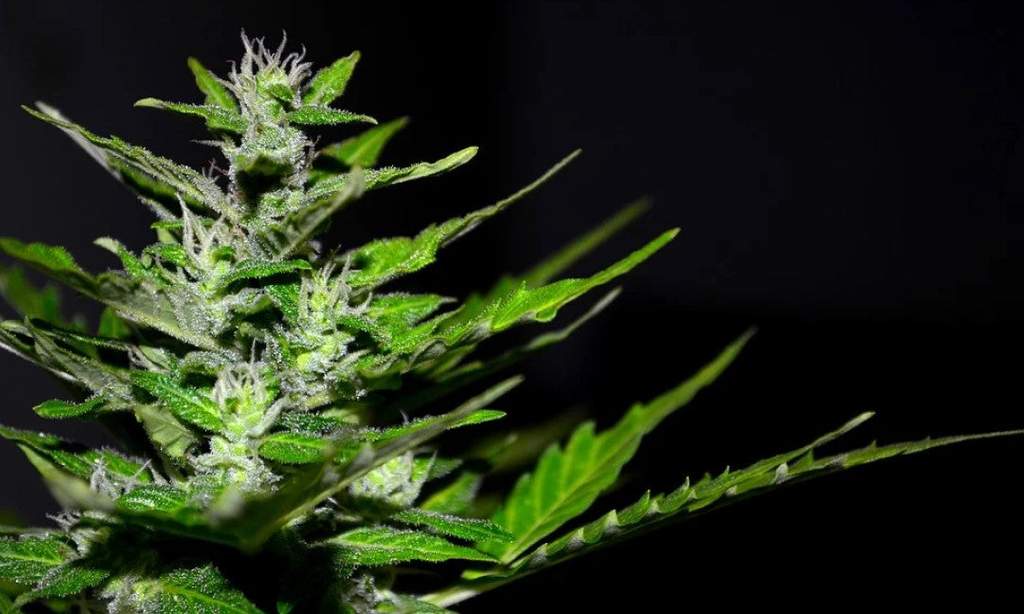
11 Growing Tips You Need to Try
For newcomers, growing cannabis can seem very overwhelming, especially when one has so much information at their disposal. As a beginner, I’m sure there is nothing you would love more than to have all of these tips at your disposal. You’re in luck! Here are 11 cannabis growing tips that you must try in 2022!
Related: How to Grow Marijuana as a Garden Variety
1. Get Better Buds with Less Light
When you’re first growing cannabis, you’ll be prone to making some mistakes. This happens to the best of us. The most common mistakes among beginners often have to do with lighting. This is especially true when growing your plants indoors.
When your plants are in the vegetative stage, you should leave them in as much as 18-22 hours per day. During this time, your plants will experience a great deal of growth and progress. Once your plants move on to the flowering stage, you can see why it would be tempting to do the same. This is where most newer growers stumble. When your photo-flowering plants reach the flowering stage, you should actually decrease the amount of light your plants receive down to 12 hours per day.
Why is this, you might ask? Contrary to what you might believe, plant growth in this stage is triggered by darkness rather than light. Keeping your photo-flowering plants in constant light will keep them in the vegetative stage.
When you grow cannabis outdoors, the seasons will naturally regulate this light and dark requirement. However, you can also place your plant in darkness to help your plants out.
Related: Top 10 Lights For Growing Weed Indoors
2. Cut Back on Fertilizer
Another one of a few crucial cannabis growing tips concerns fertilizers. When your plants reach the growing stage, cut back on the nutrients. Again, this might seem contrary to what you have been brought up to believe about plant cultivation. After all, shouldn’t more nutrients be a better thing?
To help you make sense of this, think about multivitamins. When you take a multivitamin, does it make sense to take twice or three times the recommended daily amount? No, of course, it doesn’t! You could make yourself very sick.
The truth is, cannabis requires minimal nutrients to survive. Give them just enough to prevent vitamin deficiencies, and the plants take care of themselves! Why did you think cannabis was called “weed” anyway?
Excessive nutrients can trigger what is called “nutrient burn,” which starts at the tip of the leaves and will slowly spread if the condition is unaddressed. Leaves that have nutrient burn are unable to create and store energy for the plant, which will, of course, lessen your yield, and no one wants that!
Another side effect of giving your plants too many nutrients is that they will have a noticeable chemical taste and/or smell, as well as a lower THC content.
A good rule of thumb is to give your plants half the daily recommended amount of nutrients and only amp it up once your plants exhibit signs of nutrient deficiency. Remember the saying, “less is more”? This especially applies to cannabis nutrients.
3. Pick the Growing Medium that is Right for You!
Perhaps one of the most important cannabis growing tips is to select the right growing medium for your plants. Cannabis plants perform best when they are planted in something that doesn’t retain too much moisture after watering. For example, using sandy soil that stays drier will give you a better yield than clay soil which retains most of the moisture provided during watering.
Choosing the correct medium can make or break your cannabis crops by determining how much or how little a yield your plants give.
Picking the correct soil does not need to be risky; simply use our Superb Soil. It’s designed for growing cannabis and also contains nutrients that will help your plants thrive. With it, you won’t have to worry about giving your plants too much fertilizer or having soil that retains too much water.
4. Drought Stress Boosts Potency of your Plants
Here is a growing tip straight from the experts! Drought stress can boost the potency of your plants. No, seriously! Allowing the leaves of your plants to wilt just a bit due to insufficient moisture will cause them to curl at the ends and not stand up straight, which is when you would water them just enough to revive the leaves.
If you keep up this drought stress during the entire flowering stage, the harvest you obtain will be more potent than from plants that were watered liberally. This is because THC and other compounds will become more concentrated in the buds of the plants, which are watered sparingly.
Think of it like this: take strawberries picked from a plant that is watered heavily daily and compare their taste to sparsely watered strawberries. The berries from the second plant will taste better!
Related: How To Grow Autoflowers Outside
5. Choose Your Strain Wisely
Perhaps one of the most valuable cannabis growing tips is to keep in mind that not all cannabis plants are created equal. You need to think carefully about the type of plant you want before you begin planting. For instance, some strains produce purple buds, while other strains give you bright green buds. Similarly, some plants mature quickly while others take longer.
Cannabis strains also vary in terms of the size of the plants, the concentration of different compounds (CBN, THC, etc.), the aroma of the buds, as well as the effects one experiences after consuming them. It’s important to remember that resistance to adverse conditions, such as pests and diseases, overfeeding, underfeeding, extreme heat or cold, and even over-enthusiastic training, also varies from one strain to another.
This is why it is vital to do your homework when it comes to the different strains available and pick the strain that is best suited to your needs.
Because this process can be overwhelming for even the most seasoned grower, a Pot for Pot includes discounts to some of the best sources for cannabis seeds with every complete kit order. We recognize that there are many strains to choose from and want to help you get started growing as soon as possible. One of the best ways to do this is by starting with a reliable source.
6. Harvest and Post-Harvest Handling is Critical!
What you do at harvest time and beyond can make or break your cannabis crop!
First and foremost, don’t harvest too early or too late. So, how do you know when is the right time to harvest? The clue lies in your buds.
If your buds aren’t “sprouting” any new white hairs, this means harvest time is close. Closely observe the hairs on the buds and begin harvesting when approximately half of those hairs have become dark in appearance. This dark color lets you know that the compounds in the buds have reached their highest level of concentration, so any delay will cause them to start dwindling.
After harvesting, take the time to dry those buds in a dark, well-ventilated location. Hang them upside down when drying them. You will know that they have dried if the stems snap rather than bend when you manipulate them.
Drying the buds is only half the work. Even more, moisture is hidden inside those buds. This is where the curing process comes in.
Place the buds in dark containers and seal them, only opening the container once a day for about a minute to allow dry air to get in while moist air is expelled.
How long should curing last? Why not try some when you are opening the containers to let dry air in. Is there mold on the buds? If not, good! No condensation on the container’s walls? Good! Are the taste and smell satisfactory when you smoke a sample? Good! At this point, stop curing the buds and seal them tightly until you are ready to start smoking them. The curing process can last three weeks or longer.
Related: The Ultimate Guide to Harvesting Cannabis
7. Airflow, Airflow, and More Airflow!
It is critical to ventilate the grow space adequately. This piece of advice is so important that everyone should include it under cannabis growing rules instead of cannabis growing tips. Adequate airflow can prevent mold from growing on the buds. It can also prevent nutrient burn because when you are growing hot, the plants “drink” more water to combat the heat.
As they take more water, they absorb nutrients, increasing the risk for a nutrient burn. Spider mites, fungus, gnats, and other pests thrive in places with insufficient airflow. As you can see, many of the problems that cannabis growers face can be sidestepped if the grow spaces are adequately ventilated for proper airflow.
8. Question All Cannabis Growing Tips
Many inexperienced cannabis growers tend to implement all the advice that they are given without pausing to digest the applicability and validity of said advice. Novice growers can be forgiven for this since they believe that they are getting sound advice from people who have more experience and are therefore better placed to know what should be done in each situation.
However, not all the advice you receive will be useful or applicable in your specific circumstances. Consider the following example:
Underfeeding your plants causes their leaves to become yellow at the tips before they turn brown. Unfortunately, overfeeding plants may produce a similar outcome. If you talk to someone whose plants were overfed and they showed signs of nutrient burn, they may advise that you cut back on the nutrients you’re giving your plants, yet the problem may actually be underfeeding!
Do you see how applying advice blindly can lead you down a dark alley? Learn to question all advice you receive and only apply it after cross-checking and confirming that it holds true in your situation.
9. Take Pictures and Write Detailed Notes
One of the most essential cannabis growing tips, especially for beginners, is documenting every stage of your plants’ growth. Take numerous photos and write detailed notes in a journal. This is especially important when you notice problems in your plants.
Those notes and pictures will come in handy as you look for help in dealing with the problem, and they will be a point of reference during future growth. This record will quickly alert you about a developing problem and the proper solution instead of starting all over again on the next plant.
Don’t think for a minute that your memory will suffice! Misremembering even the most minute detail can be the undoing of your crop.
10. Always Monitor the pH and Unlock the Missing Link
Have you done everything possible, yet the buds you harvest are nothing to write home about? The pH of the moisture in your growing medium may be the silent culprit denying you a rich harvest.
The pH of your soil can make some nutrients unavailable to the roots of your plants, even if those nutrients are available in the medium. Find out what the ideal pH range for the specific medium you are using is and check whether yours has gone out of that range. Adjust accordingly, and your plants will thrive once more!
*Once again, starting with the proper soil, such as our Superb Soil, can reduce this risk.
11. Don’t Shock Your Plants
One of the most fundamental of all cannabis growing tips is to be gentle with your plants. Avoid doing anything that will shock them. For example, don’t suddenly change from providing 18 hours of light to 12 hours of light. Increase the hours of darkness gradually until you reach your desired light schedule.
Similarly, when it is time to switch to the nutrients for the flowering stage, don’t stop providing those for vegetative growth one day and use only those for flowering on the next day. This abrupt change will shock your plants and decrease your growth rate.
It is better to introduce any change to your plants gradually so that they can adjust appropriately without any decline in their growth.
Growing cannabis is easy and fun, and with a little know-how, your plants can yield an impressive bounty. If you’ve grown before, which of these cannabis growing tips have saved you from a ruined harvest? If you are just beginning, which do you intend to try?
Regardless of where you are on the cannabis growing expertise scale, a Pot for Pot has all the supplies that you need.
Related: The Growth of a Cannabis Plant
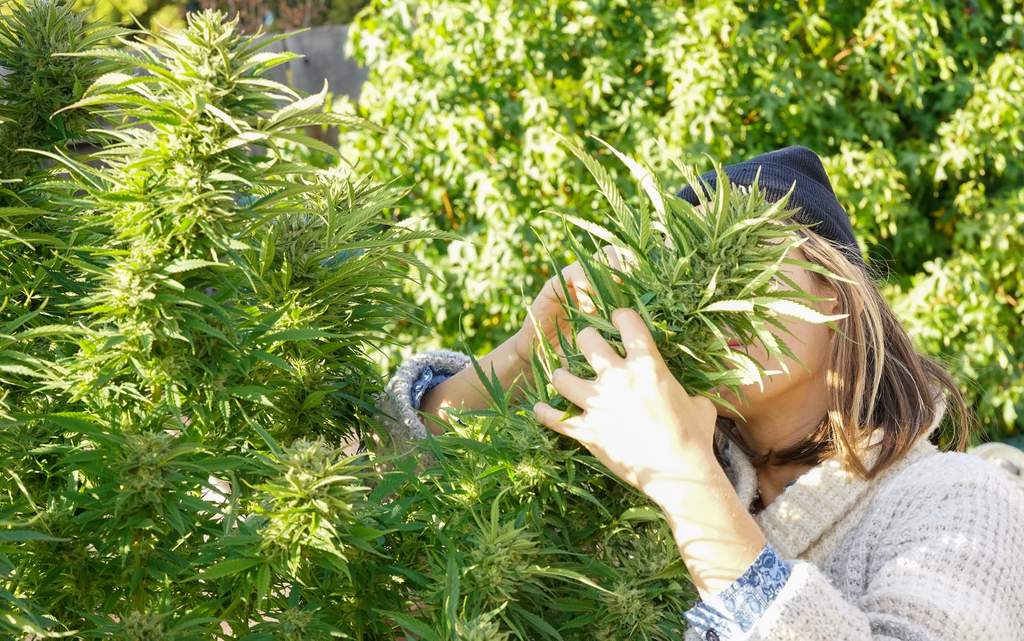
Growing Cannabis: Maintaining Discretion
The strong odor of cannabis can prevent you from growing it discreetly. While growing cannabis anywhere can produce a strong odor, it’s more challenging to control the smell of outdoor gardens - air purifiers, filters, and vents don’t work as efficiently outside.
Some companion plants help mask the strong odor of outdoor cannabis and promote increased production of terpenes. Suppose you’re cultivating your cannabis in the earth instead of pots, plant companion plants alongside your cannabis. This increases the nutrients in the ground, improves soil filtration, and helps in soil preservation.
Companion plants like coriander and yarrow attract predatory wasps that will eliminate pesky infestations in your cannabis garden. Other companion plants like lavender and lemon balm help mask the odor of cannabis while also deterring pests. Other companion plants provide additional benefits. Basil increases the production of terpenes, alfalfa increases water penetration and nitrogen levels, and sunflowers improve soil filtration and preservation.
Cannabis cultivation and gardening are worthwhile hobbies even if you're not interesting in getting THC in your system. While the learning curve can be steep, aspiring growers should feel encouraged to try growing medicinal cannabis for themselves, their families, and friends.
Visit a Pot for Pot for all of your cannabis needs. We have complete growing kits in various sizes that provide everything you’ll need to ensure you have a fun and successful harvest.
Cannabis Growing FAQs for 2022
What Mistakes Should I Avoid When Growing Marijuana?
One of the biggest mistakes most people make while growing marijuana is lighting. Lighting exposed to marijuana plants is usually dependent on the growth stage. The vegetative stage requires many sunlight-18-22 hours of sunlight per day. However, the flowering stage doesn’t require this much sunlight therefore should be reduced to 12 hours per day. This is where most growers, especially beginners, go wrong and end up ruining their plants.
Which Strategies Can I Use to Increase the Yields of my Cannabis Plants?
There are various strategies you can employ to enhance the yields of your Cannabis plants. First, you should cut back on fertilizer usage when the plants reach the growing stage. This is because cannabis requires minimal nutrients when growing and excessive nutrients can trigger “nutrient burn” and consequently reduce yields as well as the THC content. You should also be keen when picking the growing medium. Pick a medium that has the correct moisture content and sufficient nutrients. You should also choose your strain wisely.
What are the Best Harvest and Post-Harvest Techniques?
The success of your cannabis plants is largely dependent on the harvesting and post-harvesting techniques. An important tip when it comes to harvesting is that you shouldn’t harvest when it's too early or too late. The right time for harvesting is when half the hairs on the buds have become dark in appearance. After harvesting, the buds should be dried in a dark, well-ventilated location. The plants should be hung upside down. The buds should be tried in dark sealed containers-opened only once a day to allow dry air to get in and expel moist air.